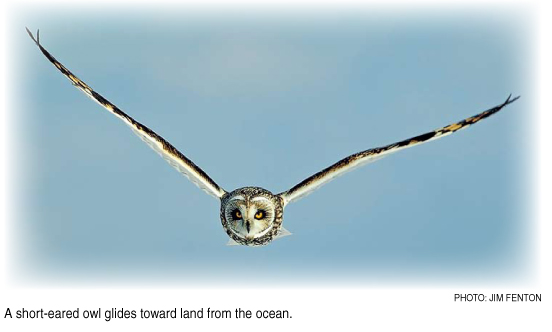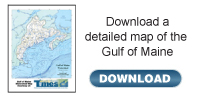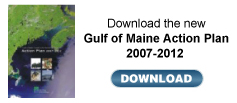Editor's Notes
Make your summer active

Summer is a time to get out and enjoy the environment. It’s also a time of potentially turbulent storms and the dreaded red tides.
This issue of the Gulf of Maine Times contains a feature on the latest developments in hurricane technology and how the Gulf of Maine can prepare for the much-anticipated next great hurricane. One of the main challenges public officials and scientists face in both New England and Atlantic Canada is overcoming the nonchalance of the general population, which has not had to go without electricity for long periods of time or face the other impacts of a major hurricane.
The challenge of raising public awareness is perhaps more acute in the Canadian provinces. When Peter Bowyer, the program manager of the Canadian Hurricane Centre in Dartmouth, Nova Scotia, introduces himself to people, he says they look at him as though he just said, “I’m the coach of the Jamaican bobsled team.” The unspoken question is always, “Why would Canada ever need a hurricane center?” The story by Susan Llewelyn Leach educates readers about the potential risks and impacts of the hurricane season, which started June 1.
Another story focuses on a census of insects being taken in the Boston Harbor Islands, where citizen and professional scientists are working hand-in-hand to collect and identify the species in that park area and put them into a database. Some of the species—on islands accessible by public transportation—are new or haven’t been seen for more than 100 years. Knowing what insects are in the park could eventually tell us more about the impact of bigger issues, like climate change. An event to be held August 18 will allow the public to help collect samples of life on the islands. For dates and other activities check out the Boston Harbor Islands and National Park Service Nature and Science Web site.
Each season brings with it miracles of life, and stresses. Owls, for example, had a tough winter. A decline of red-backed vole in Canada forced many owls south for food, and unfortunately, for collisions with cars. Karen McElmurry, director of the Center for Wildlife in Maine, talks with the Times about creating a haven for hurt animals.
We hope these and other articles in the issue will inspire you to go outside and discover the nature in your own backyard.
On another note, we’d like to say thank you and goodbye to several people who have contributed significantly to the Times and who are going on to new opportunities. Peter Taylor has been writing the Science Insights column in the newspaper and has consulted for the Gulf of Maine Science Translation Project for five years. His last column appears in this issue. Karin Hansen, outreach coordinator for the Gulf of Maine Council on the Marine Environment for four-and-one-half years, also has managed the subscriber database and sent out the email notices about the availability of the Times online. This is her last issue of work on the paper. It also is my last issue as editor. I have enjoyed working on the newspaper in various capacities of editing, writing, design, layout and production for the past four years, and have had the privilege of interacting with many talented and generous writers, editorial staff, photographers, artists and designers. I’ve had the opportunity to update and improve the paper’s print and online presence with input from readers, members of the Gulf of Maine Council and other supporters of the paper. I’ve also had the pleasure of interacting with wonderful stewards in the Gulf of Maine and with the energetic readers of the Times. Thank you for the chance to spend time with you.
Lori Valigra
|








